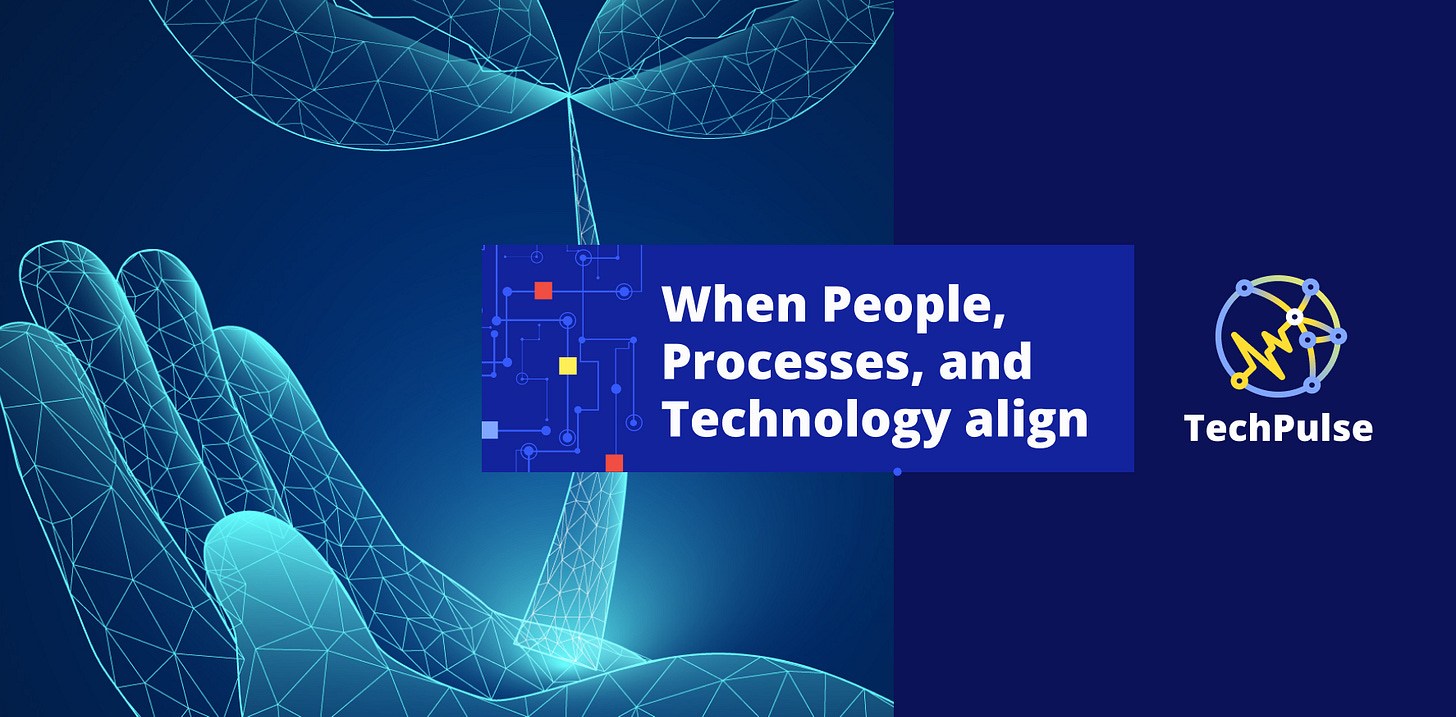Digital Transformation Miniseries | Part 2: Building the Foundation - The Three Pillars of Digital Transformation
Beyond Technology: A Holistic Approach to Transformation
While technology is a crucial driver of digital transformation, it's not the only element. A successful transformation requires a holistic approach encompassing three interconnected pillars: People, Processes, and Technology.
People: The Heart of Transformation
Digital transformation initiatives are 1.5 times more likely to succeed when organizations prioritize the human aspect of change management (Prosci). This means:
Building a Culture of Change: Encourage a growth mindset and a willingness to embrace new working methods.
Investing in Upskilling and Reskilling: Equip your workforce with the digital skills needed for the future, addressing the growing demand for expertise in data analysis, cybersecurity, and cloud computing.
Fostering Collaboration and Communication: Break down silos between IT and business units, fostering transparency and shared ownership of the transformation process.
Processes: Optimizing for Efficiency and Agility
Digital transformation is an opportunity to rethink and optimize existing processes, making them more efficient, agile, and data-driven.
Automation: Embrace automation to streamline repetitive tasks, freeing up employees for more strategic work. Gartner reports that process optimization can reduce operational costs by up to 30%.
Data-Driven Decision Making: Leverage data analytics to gain insights into customer behavior, market trends, and operational efficiency, which will inform more strategic decisions.
Agile Methodologies: Adopt agile project management practices to respond quickly to changing market demands and efficiently iterate on solutions.
Technology: The Enabling Force
Technology is the backbone of digital transformation, providing the tools and infrastructure to support new processes and working methods.
Cloud Computing: Provides scalability, flexibility, and cost-efficiency, enabling organizations to adapt quickly to changing business needs.
Artificial Intelligence (AI) and Machine Learning (ML): Unlock insights from data, automate complex tasks, and enable more personalized customer experiences.
Data Analytics Platforms: Provide the tools to collect, analyze, and visualize data, turning information into actionable insights.
Main Takeaway: Digital transformation is not a technology project; it's a business transformation enabled by technology. By focusing on people, processes, and technology in unison, organizations can create a solid foundation for lasting change.
Coming Up in Part 3: We'll explore the pivotal role of cloud computing in digital transformation and how to navigate the complexities of cloud adoption.
As you build the foundation for your digital transformation, consider partnering with those who can help you align these three pillars effectively. A collaborative approach can make all the difference in achieving lasting success.




